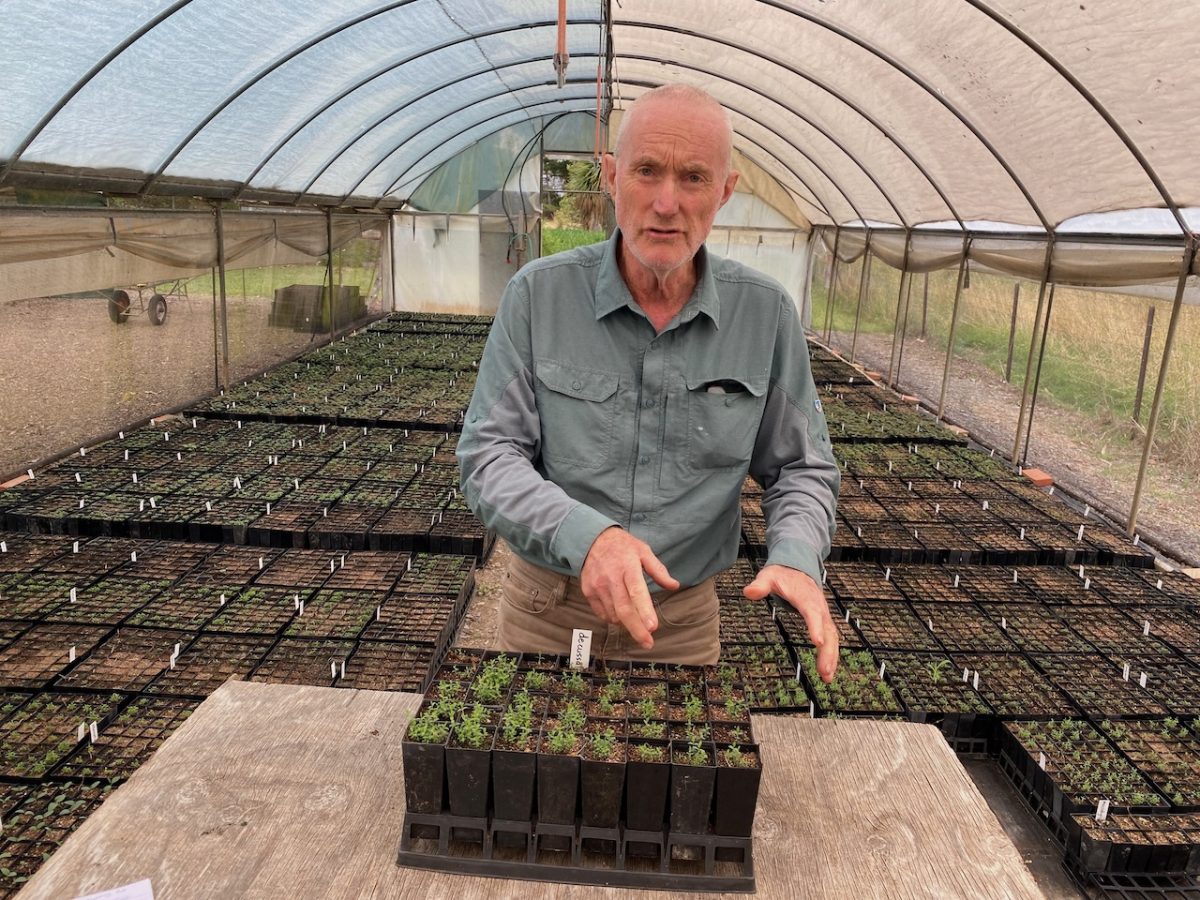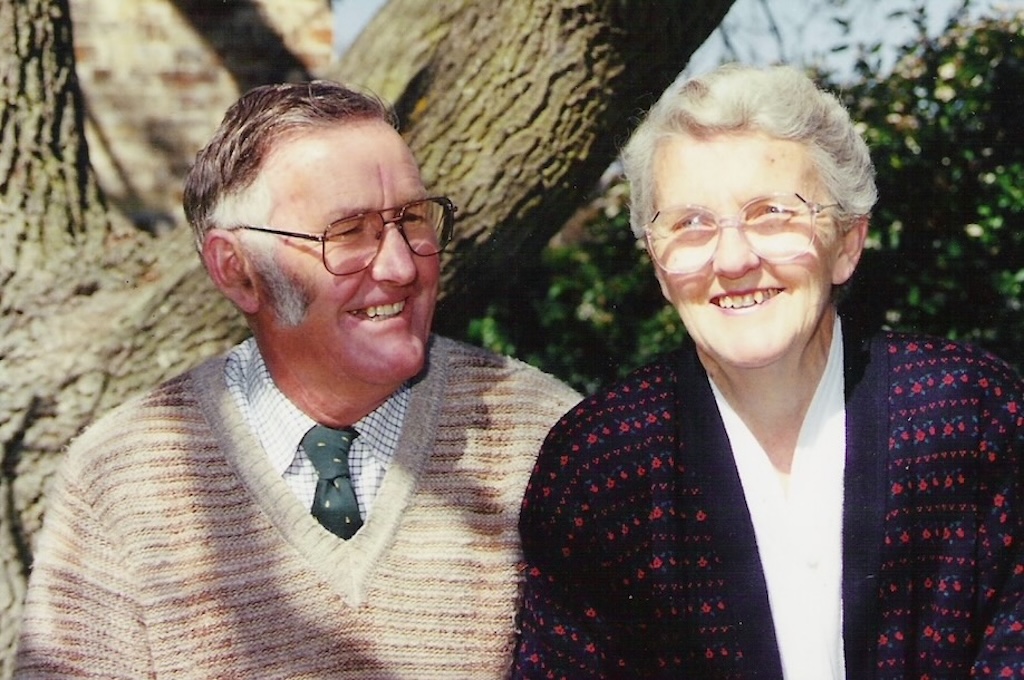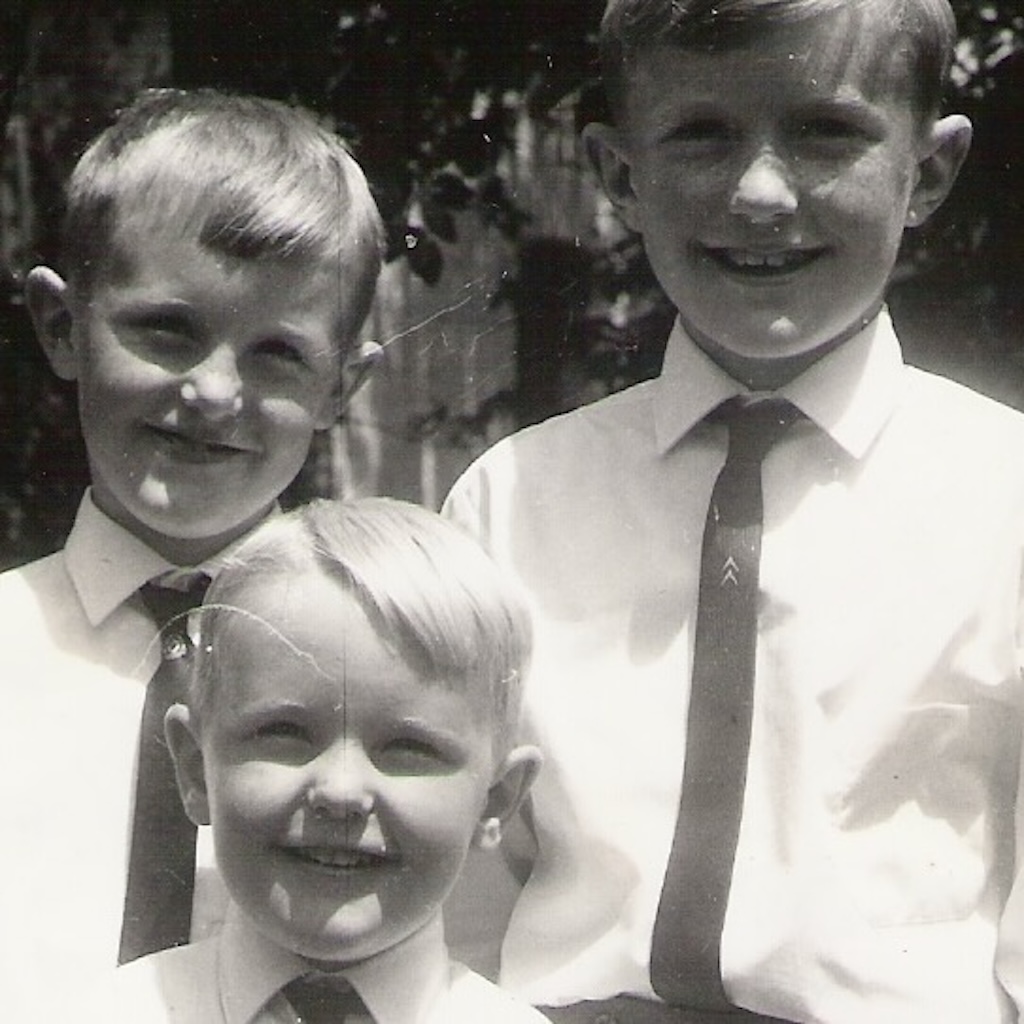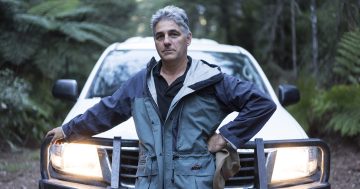
Andrew Studdert thins Melaleuca decussate (Honey Myrtle) seedlings at Danganelly Nursery. He says among the most popular gums people plant are yellow box (Eucalyptus melliodora) and manor gum (Eucalyptus viminalis). Photo: John Thistleton.
When two centuries of rampant land clearing finally slowed in Australia, a small nursery east of Goulburn joined the tide of green regeneration that has swept the land ever since.
Danganelly Native Nursery sprung into life in 1986 near the village of Towrang. Its name comes from Dangenella, the ancestral home of the Studdert family in County Clare, Ireland. Charles Studdert bought the property in 1935 but died the following year, from World War I-related injuries. This left his wife Geraldine and their three children alone to hang on to the family property, which they did with the help of a neighbour, George Jobson.
One of the children, also named Charles but better known as Mick left school at 16 to help run the farm and years later established the nursery with his wife Pam, to diversify their income.
Before launching his nursery venture, Mick was a woolclasser on prominent properties including Pomeroy, managed other farms, and was a contract fencer with a partner, Ray Bowden, earning off-farm income.
“We didn’t see much of him as boys,” one of his three sons, Andrew said. Mick had learned from early in life to work hard. “Recovering from his father’s death in Depression years, they were pretty tough times,” Andrew said.
“The sheds we had he built himself from timber dragged down from the timbered block along the Towrang Road,” he said. “He was very self-sufficient, innovative. There are a couple of items of furniture that he has made here.
“It never ceased to amaze me the people that he knew in the district and strangely enough, as it turned out, how well he knew the local flora – what grew where,” Andrew said.
Through intense application and listening to consultants from Australian Native Landscapes, which became the nursery’s long-time supplier, Mick learned the critical aspects of growing out seedings, including the exact mixture for potting tube stock.

Nursery founder Mick Studdert and his wife Pam, a former nursing sister in the children’s ward of Goulburn Base Hospital. Photo: Studdert family collection.
The Studderts bought cuttings from suppliers, mostly from Victoria, which they grew out, potted up and on-sold them to nurseries in Sydney and Canberra. In the late 1990s Andrew’s brother Peter, a horticulturalist by this stage, became a partner in the business.
Drawing water from the Wollondilly River for the expanding number of seedlings and tube stock, Danganelly was taking truckloads to the Sydney Plant Mart where they leased a stand from which metropolitan-based nurseries bought their plants.
The nursery extended out the northern side of their home where they ventured into a retail outlet to complement their wholesale operation. A travelling salesman called regularly, filling his truck with Danganelly plants which he sold to nurseries at Orange, Dubbo and beyond.
“It is all about timing too,” Andrew said. “You must have the stock for spring when people are looking for it. It was a pretty intense sort of lifestyle, which is largely why they shut it down,” he said.
Peter left in 2005 and Mick continued to maintain a much-reduced wholesale business up until his death in 2016. Andrew had worked for the then Roads and Traffic Authority, but he always lent a hand when he had the time.
“As Dad got older I took on more of the physical work; he largely managed the site,” Andrew said. “When he passed away, I decided to keep it going as a sideline. It’s a great lifestyle; you meet lots of people.”
While Danganelly is today a shadow of what it used to be, a minnow compared to the enormous native plant nurseries meeting the ever-growing demand, the family-owned Towrang nursery is supplying tube stock to farmers, progressive shire councils, National Parks and Wildlife Service, and research and advocacy organisation, the Mulloon Institute between Canberra and Braidwood. Other customers include Rivers of Carbon, Local Land Services in partnership with landholders who fence off areas of their farms, and big properties fencing off parcels of land, mainly around gullies and using the trees as part of their business profile with carbon credits.

Andrew, John and Peter Studdert, who were raised at Danganelly near Towrang. Photo: Studdert family collection.
Andrew sowed tube stock in the first week of December and will do another sowing this month to have plants ready for autumn and another lot for the following spring.
“People are more aware of the environment and are planting trees,” he said. “There are a few pioneers who have been doing it for a long period, but it’s only relatively recently that people have been doing so in significant numbers,” he said.








